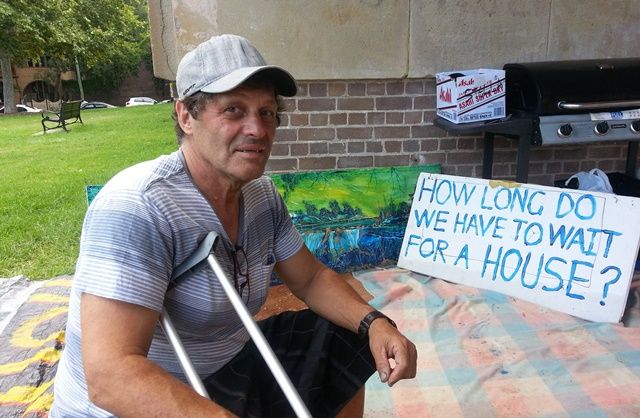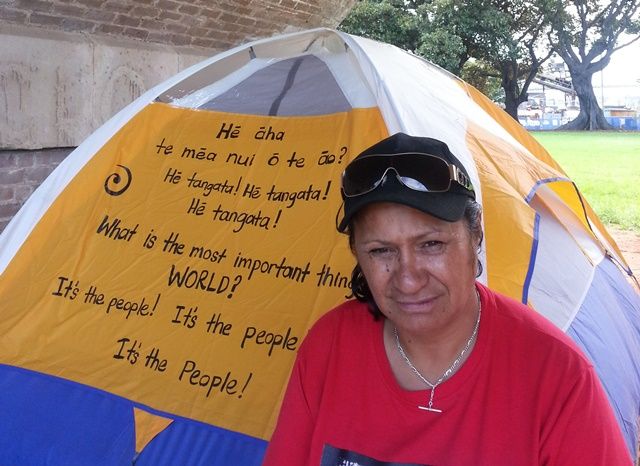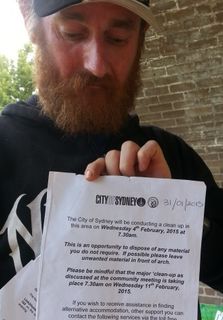Shannon Jones
With the selective strike by US oil refinery workers in its third week, a warning must be issued: There is an unbridgeable gulf between the determination of the refinery workers fighting to reverse the impact of decades of declining living standards and safety conditions, and the sabotage of their struggle by the United Steelworkers union (USW).
The USW has severely limited the strike, forcing the workers to fight with only a small fraction of their strength. It is negotiating behind the backs of the workers, refusing to disclose anything about the six company proposals already put on the table—offers so rotten that even the USW didn’t dare to bring them back to the rank-and-file for a vote. The union is promoting the self-defeating policy of petitioning the big business politicians who are all in the pockets of Big Oil.
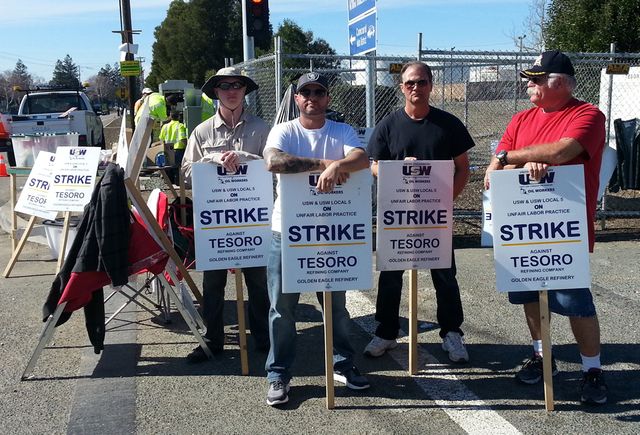 Pickets at the Tesoro Golden Eagle Refinery in Martinez, California
Pickets at the Tesoro Golden Eagle Refinery in Martinez, California
USW President Leo Gerard is a trusted ally of Corporate America, appointed by Obama to sit on his trade policy and American Manufacturing Partnership committees, where he collaborates with executives to make their businesses more “competitive.” In other words, he is complicit in cutting labor costs through speedup, wage cutting and outsourcing. Gerard is well paid for his troubles, making $217,206 a year as USW president, along with additional sums in other capacities.
Vice President Gary Beevers, who is leading the oil industry negotiations, made $172,099 in 2013. The top eight USW officials collectively took home $1.5 million and the top 21 officers a combined $3.5 million, about $170,000 each. Their incomes would put them in the middle ranks of oil company management, and that is symptomatic: the union functions not as the representative of the workers, but as an industrial police force for the company.
For three decades, the USW has worked with Wall Street investment bankers to impose the crisis of the steel industry on the backs of steelworkers, retirees and their families. It has long ceased to function as a workers organization or concern itself with improving the lives of its members and their families. Instead, it operates as a business, whose sole purpose is maintaining the salaries and expense accounts of the officials who staff its offices.
The origins of the USW
The USW arose out of the militant industrial struggles of the 1930s, largely led by socialists and left-wing workers, which established the mass industrial unions. Some of the bloodiest battles of the CIO movement took place during the 1937 Little Steel Strike, including the Memorial Day Massacre, when police murdered ten striking workers in south Chicago. By the time the post-World War II strike wave was over, workers had won important gains in wages, benefits and working conditions, despite the ferocious resistance of the steel bosses.
But the leadership of the Steel Workers Organizing Committee, which became the USW, was from the first dominated by a politically right-wing layer of officials, headed by Philip Murray and David McDonald, with ties to the Catholic Church hierarchy, the Democratic Party and the American government.
During the anti-communist witch-hunts of the late 1940s and early 1950s, they drove out the rank-and-file socialist militants who had spearheaded the struggle to build the union. They backed the merger of the CIO with the reactionary AFL in 1955, and consolidated a parasitic bureaucracy that ultimately presided over the collapse of both the USW and the AFL-CIO as a whole.
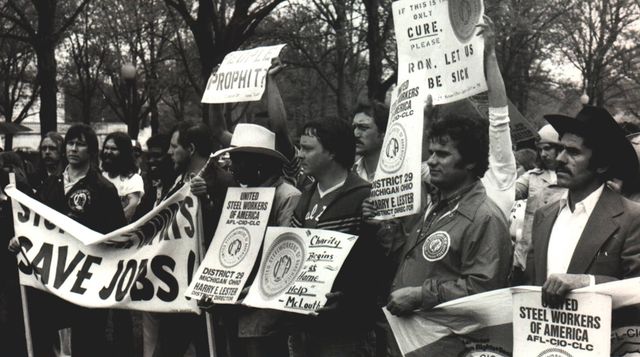 McLouth Steel workers in Washington DC, April, 1982
McLouth Steel workers in Washington DC, April, 1982
For some years, however, steelworkers were still able to make gains, thanks to the economic conditions of the post-World War II boom and the dominance of American industry in the world market.
Thus, in 1959, when the USW called a nationwide steel strike, more than 500,000 workers walked out, shutting down most of the industry for 116 days, a conflict that ended only with a Taft-Hartley injunction issued by the Eisenhower administration. The eventual settlement, despite the conservative bureaucracy, included a wage increase, the first-ever cost-of-living escalator clause, and substantial improvements in pensions and health benefits.
As late as 1970-1971, the USW was able to negotiate wage increases of 10 percent a year with only the threat of a strike, under conditions of significant struggles by other sections of the labor movement, including Teamsters, GM workers, postal workers and longshoremen.
The situation changed in the 1970s as powerful global competitors began to challenge the dominance of US industry. The recession of 1973-1974 brought mass layoffs of industrial workers for the first time since the Great Depression.
The response of the USW and other unions to this economic sea change was to embrace the policies of corporatist union-management collaboration, insisting that workers tie their future to the unconditional defense of American corporations against their global competitors. At the same time, they maintained the subordination of the working class to the Democratic Party, even as the Democrats moved further and further to the right and openly attacked workers in struggle.
Flowing from this, the unions insisted that workers accept massive concessions and downsizing in order to strengthen the competitive position of US industry. To this end, the unions offered their services to management to sabotage and suppress the efforts of workers to defend their jobs and living standards. This was accompanied by the integration of the unions into the structure of management through the creation of joint labor-management committees.
Following the decision of US Federal Reserve Chairman Paul Volcker to impose a huge increase in interest rates in 1979, mass layoffs and bankruptcies spread across the steel industry, along with demands for concessions. The USW sought to divert workers’ anger through the promotion of national chauvinism and Buy American campaigns, including anti-Japanese bumper stickers carrying the slogan “Remember Pearl Harbor.”
This nationalist poison served only to conceal the ever greater collaboration of the USW with the US-based corporate executives and their collusion in the betrayal of strikes, the imposition of wage and pension cuts, and the shutdown of scores of steel mills in Pittsburgh, Cleveland, Chicago, Youngstown and other cities.
The struggles of the 1980s
In the course of the 1980s, a series of militant strikes by steelworkers threatened to break out of the control of the union leadership. In each case, the USW worked to isolate and wear down the strikers. The USW allowed the movement of strikebreakers into the plants and stood by when so-called Democratic allies of labor mobilized police and National Guard troops to attack picket lines.
When 2,200 copper miners struck Phelps Dodge in 1983, the USW allowed the strike to drag on for months. In the meantime, Arizona Governor Bruce Babbitt, a Democrat, mobilized the National Guard to attack picket lines and escort strikebreakers. As a result, the strike was crushed and the local union decertified.
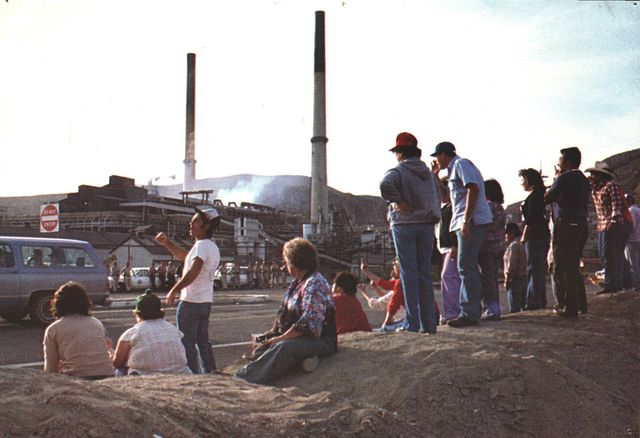 Copper miners on the picket line in Morenci, Arizona during the 1983 strike against Phelps Dodge
Copper miners on the picket line in Morenci, Arizona during the 1983 strike against Phelps Dodge
The Workers League, the forerunner of the Socialist Equality Party, intervened in the Phelps Dodge strike to warn the workers that the USW and AFL-CIO policy would lead to disaster, and to fight for a political alternative. At that time, when tens of millions of workers still looked to the unions to defend their jobs and living standards, the Workers League advanced the demand for the unions to break with the Democrats and build a Labor Party based on a socialist program, as a means of fighting for the political independence of the working class and a mass struggle for socialist policies.
At Phelps Dodge and many other struggles, this campaign for the building of a mass political movement of the working class against capitalism won a wide hearing. Leaders of the Workers League addressed meetings of the copper miners, air traffic controllers, meatpackers and other workers involved in bitter struggles, and the Bulletin, the Workers League’s newspaper and a forerunner of the World Socialist Web Site, was the most widely read publication on many picket lines throughout the United States.
In 1985, the USW abandoned pattern bargaining in the steel industry, leading to a series of isolated and uncoordinated strikes and lockouts in which workers’ attempts to resist concessions were betrayed. Wheeling-Pittsburgh Steel declared bankruptcy and cancelled its union contract. After a bitter lockout, in which workers were essentially abandoned, the USW agreed to a concessionary contract slashing wages in exchange for the creation of union-management committees at every level of the company.
Following a record six-month lockout at USX in 1986-1987, the USW agreed to concessions along with the elimination of thousands of jobs. A statement published in the Bulletin on February 6, 1987, headlined “USX betrayal: Vital lessons for all labor,” drew the lessons of this struggle:
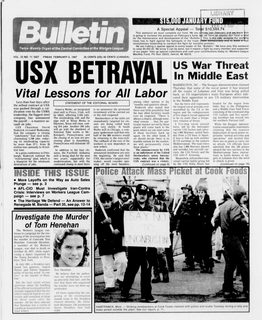 Front page from weekly Bulletindenouncing USW betrayal of USX workers
Front page from weekly Bulletindenouncing USW betrayal of USX workers
“To say that the steelworkers who fought the record 184-day lockout, the longest work stoppage in the history of the steel industry, were betrayed by the treachery of the USWA bureaucracy is an understatement. To put it bluntly, the four-year contract, which includes $2.50 an hour wage cuts and job combinations leading to nearly 1,400 layoffs, is mild compared to what is now on the agenda.”
The Bulletin warned, “The treachery of the labor bureaucrats is opening the floodgates for a new wave of wage-cutting, union-busting and unemployment even worse than the last six years.”
The result of these betrayals was a massive destruction of jobs in the steel industry, with total employment falling from 453,000 in 1979 to 168,000 in 1995. Throughout this period, the USW sought to offset the loss of dues-paying members by establishing new sources of income through its collaboration with management.
One such scheme was the Employee Stock Ownership Plan (ESOP), or “workers’ buyout.” At McLouth Steel outside of Detroit, the USW negotiated a buyout in 1988 that slashed wages and gutted work rules in exchange for workers’ ownership of 85 percent of common stock. In 1995, the company went bankrupt. The workers lost their stock and their jobs.
Restructuring the industry—and the union
When the US steel industry faced another severe crisis in the late 1990s, the USW responded by working with vulture capitalists such as Wilbur Ross, head of private equity firm International Steel Group (ISG), to restructure the steel industry on the backs of workers and retirees.
This turn by the USW was signaled by the hiring of investment banker Ron Bloom as a union advisor in 1996. Bloom, who was later appointed to President Obama’s task force overseeing the GM and Chrysler bankruptcies, was a specialist in organizing worker buyouts, operating an “investment banking advisory boutique” on Wall Street. In 1994 he was involved in the effort by United Airlines pilots to organize a buyout of the failing company in exchange for $4.9 billion in wage and benefit concessions. In the end, workers were hit with massive pension benefit cuts when the company declared bankruptcy.
As a USW adviser, Bloom worked closely with the current USW president, Leo Gerard. Bloom oversaw the imposition of concessions and job losses in the name of improving the “competitive” position of US steel companies against their overseas rivals.
According to an article in the March 4, 2007 Pittsburgh Post Gazette, the USW “pushed for mergers among more than 80 steel companies big and small, the better to face the real competition—government subsidized steel corporations overseas. That effort has included going to Wall Street to help finance the mergers.”
In addition to “sacrificing thousands of jobs,” the Gazette noted, the union also “agreed to relax work rules so that workers could be shifted more easily from one role to another,” and “worked with management to deal with ‘legacy costs,’ the increasing burden of pensions and health care for retirees.”
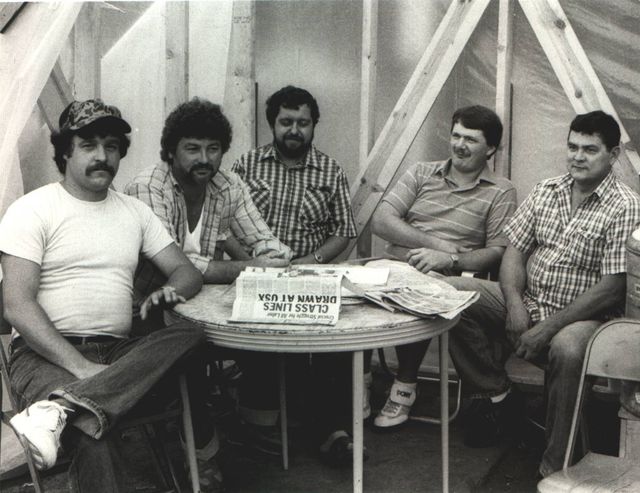 Locked out USX steelworkers at the Clairton, Pennsylvania Works, August, 1986
Locked out USX steelworkers at the Clairton, Pennsylvania Works, August, 1986
The results of the pro-company policy were catastrophic for steelworkers, their families and their communities. In 2001, for example, the USW pushed for the merger of ISG and bankrupt LTV Steel. The deal, approved by the USW, destroyed 7,500 jobs and paved the way for the elimination of health care for 50,000 retired and laid-off workers. Meanwhile, retirees’ pensions were slashed when the bankrupt steelmaker dumped the pensions into the federal Pension Benefit Guarantee Corporation.
In 2003, Bethlehem Steel, another company targeted by ISG, terminated health care and life insurance benefits for 95,000 retired workers and their dependents and handed pensions over to the PBGC.
After the purchase agreement with ISG, Bethlehem CEO Robert Miller praised the role of the USW in consummating the deal. “This dramatic turnaround in the prospects for the industry has been made possible by the innovative new labor agreement with the USW,” he declared.
While wrecking the lives of steelworkers and retirees, the actions of the USW served to enrich speculators like Ross and other corporate raiders. In 2004, the 17 top steel companies reported after-tax profits of $6.6 billion. Ross later sold off his stake in ISG to an Indian entrepreneur, pocketing billions in the process.
In exchange for helping to impose concessions, the USW pressed for seats on company boards of directors. It also helped establish Voluntary Employee Beneficiary Associations (VEBAs) to handle payment of retiree benefits. By establishing VEBAs, the companies were able off to offload their retiree liabilities.
The VEBAs amounted to a payoff to union officials, who took over the task of imposing cuts in benefits. The VEBA set up by the USW at Goodyear later became the model for a similar deal between the United Auto Workers and the auto companies in 2007.
Much like its corporate “partners,” the USW has sustained itself over the past quarter-century through mergers with other, equally bankrupt but smaller unions, including the United Rubber Workers; the Aluminum, Brick and Glass Workers Union; the American Flint Glass Workers Union; and the Paper, Allied-Industrial, Chemical and Energy Workers International Union (PACE), itself the product of the 1999 merger of the United Paperworkers International Union and the Oil, Chemical and Atomic Workers.
It was the merger with PACE in 2005 that brought the oil workers, now locked in a partial strike of the oil industry, into the USW. The oil workers did not flock to the USW to join a thriving organization with a history of fighting for its members. They were acquired by a business that calls itself a union in order to facilitate its role as subordinate of giant corporations.
The USW has pursued the same corporatist strategy in the oil refining industry as in basic steel. Following the merger with PACE in 2005, the USW worked with the Obama administration to help the private equity firm Carlyle Group acquire the Sunoco refinery in Philadelphia. The deal, consummated in 2012, involved the USW agreeing to concessions, including reductions in overtime pay.
In 2012, the USW endorsed Obama’s reelection campaign, with Gerard praising the president for turning around “an economy he inherited that was nose-diving towards a depression by focusing on jobs, manufacturing and enforcing US trade laws.” In fact, Obama’s “focus on manufacturing” consisted of working with the UAW and other unions to reduce wages, health care and pensions so sharply that manufacturers began shifting production from China, Mexico and other low-wage countries back to the US.
Meanwhile, the US president has proven to be a tool of Big Oil just like his Republican predecessor. This was shown in his kid-gloves treatment of BP after the Gulf of Mexico oil spill and the Justice Department’s decision last year to drop the pursuit of criminal charges against Tesoro for the 2010 explosion that killed seven oil workers in Washington state.
Even as it was endorsing Obama for a second term, the USW betrayed the three-month struggle of Cooper Tire workers in Findlay, Ohio. The workers were locked out for opposing the company’s demands for a wage cut.
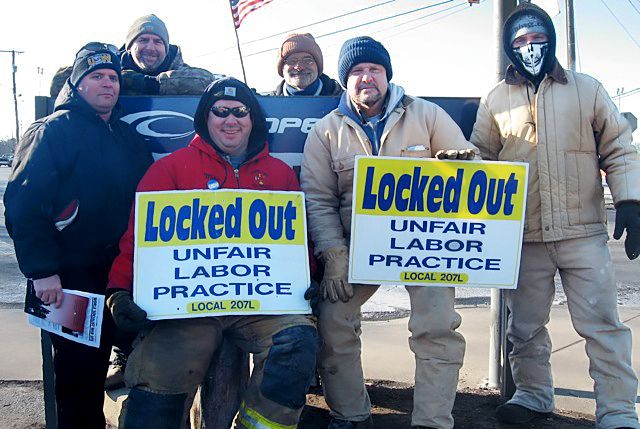 Locked out Cooper Tire workers on the picket line in Findlay, Ohio, January 2013
Locked out Cooper Tire workers on the picket line in Findlay, Ohio, January 2013
Although the USW sat on a $150 million strike fund, it refused to provide strike benefits, handing out only a few hundred dollars worth of gift cards for groceries, and negotiating a separate contract at a Cooper Tire plant in Texarkana, Arkansas while workers in Findlay were still locked out. The USW then pushed through a contract that expanded the power of management to re-rate jobs, lower wage rates, and drive out older, higher-paid workers, replacing them with young workers making $13 an hour.
At every point during the struggle in Findlay and countless other fights over the last 35 years, workers confronted the USW not as an ally, let alone an organizer of struggle, but as an agent of management.
As this record makes clear, in the current strike the USW stands on the side of the billionaire owners of the oil industry and against the strivings of refinery workers for a decent standard of living, safe working conditions and a secure retirement.
From this, certain conclusions need to be drawn. The revival of militant working class struggles requires a break with this rotten organization, which is committed to the defense of American capitalism, and the building of new, democratic rank-and-file committees of struggle.
Above all, the working class needs a new political strategy—one that is based on the perspective of socialism, i.e., the international unity of the working class fighting for common ownership and democratic control of industry in the interests of human need, not private profit.
This requires a rejection of the American nationalism promoted by the USW and the adoption of an international strategy, based on the unity of workers throughout the world in a common struggle against the oil and steel multinationals. It requires a break with the Democratic and Republican parties, the twin parties of Wall Street, and the building of an independent party of the working class.
The Socialist Equality Party and its online publication, the World Socialist Web Site, fight to develop the program and leadership required for this struggle. We encourage oil workers interested in finding out more to contact the SEP.
